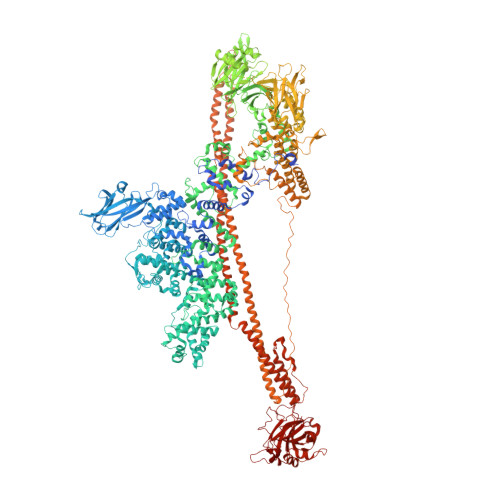Multistate kinetics of the syringe-like injection mechanism of Tc toxins.
Ng'ang'a, P.N., Folz, J., Kucher, S., Roderer, D., Xu, Y., Sitsel, O., Belyy, A., Prumbaum, D., Kuhnemuth, R., Assafa, T.E., Dong, M., Seidel, C.A.M., Bordignon, E., Raunser, S.(2025) Sci Adv 11: eadr2019-eadr2019
- PubMed: 39752508
- DOI: https://doi.org/10.1126/sciadv.adr2019
- Primary Citation of Related Structures:
8CPZ, 8CQ0, 8CQ2 - PubMed Abstract:
Tc toxins are pore-forming virulence factors of many pathogenic bacteria. Following pH-induced conformational changes, they perforate the target membrane like a syringe to translocate toxic enzymes into a cell. Although this complex transformation has been structurally well studied, the reaction pathway and the resulting temporal evolution have remained elusive. We used an integrated biophysical approach to monitor prepore-to-pore transition and found a reaction time of ~30 hours for a complete transition. We show two asynchronous general steps of the process, shell opening and channel ejection, with the overall reaction pathway being a slow multistep process involving three intermediates. Liposomes, an increasingly high pH, or receptors facilitate shell opening, which is directly correlated with an increased rate of the prepore-to-pore transition. Channel ejection is a near-instantaneous process which occurs with a transition time of <60 milliseconds. Understanding the mechanism of action of Tc toxins and unveiling modulators of the kinetics are key steps toward their application as biomedical devices or biopesticides.
- Department of Structural Biochemistry, Max Planck Institute of Molecular Physiology, Otto-Hahn-Str. 11, 44227 Dortmund, Germany.
Organizational Affiliation:
















